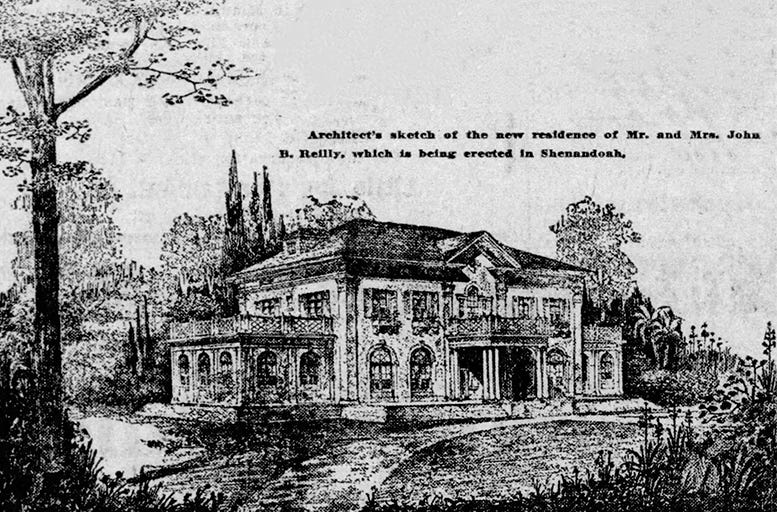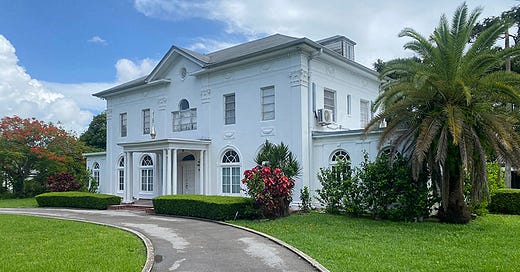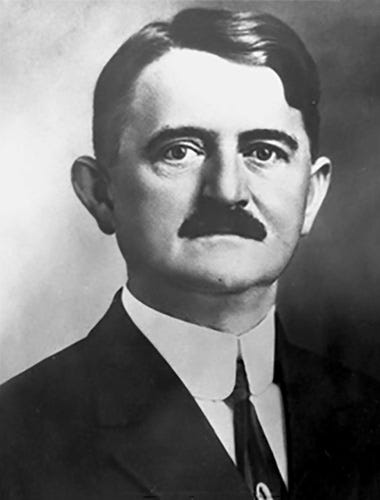First Mayor’s Mansion to House of Worship
Nestled in the heart of Little Havana is a mansion that was once the residence of Miami's first mayor, John B. Reilly. It has served as the home of a Russian orthodox church since 1954.

In the heart of the Little Havana neighborhood can be found an architectural gem situated on a generously proportioned corner lot at SW 14th Avenue and SE 11th Street. It is clear that the building harkens back to a foregone time period in Miami. In fact, the mansion at 1411 SW Eleventh Street has not only experienced nearly a century of history, but given the association with the first Mayor of Miami, the person who constructed the residence, it was tightly intertwined with the city’s early history.
When a building has lasted nearly 100 years, as is the case with this historic white mansion, it is not uncommon for that structure to have more than one act. In the case of Miami’s first mayor’s residence, its second act is one of a spiritual nature. At the time John Reilly, Miami’s first mayor, and his wife, Marie, constructed this mansion at 1411 SW Eleventh Street, they were planning on it being their last residence. As it turned out, the time spent in their dream home was much shorter than they expected.
The couple’s daughter, Eleanor, and husband, Joseph Pero, moved into the opulent manor in the mid-1930s after her mother’s passing. The Pero family raised their children and lived in the mansion until the mid-1950s, at which time they sold it to an unlikely buyer. It is not often that a single-family residence gets a second act as house of worship, but that was the case with the Reilly / Pero home when a Russian orthodox church acquired the property in 1954. This is the story of the first mayor of Miami and how his mansion found a higher calling years after his passing.
Miami Pioneer John B. Reilly
John Bernard Reilly was born on May 18, 1870, in New Haven, Connecticut. At the age of 16, he began his career as a shipping clerk for a manufacturing establishment in Branford, Connecticut, in 1886. A few years later, in 1893, John decided to move to Florida where he was hired to be a cashier and bookkeeper for the firm McGuire and McDonald, a decision that would prove to be fortuitous for both Reilly and the future City of Miami.
McGuire and McDonald were contractors for Henry Flagler and builders of Flagler’s hotels along the east coast of Florida including the Royal Poinciana and Breakers hotels in Palm Beach. Joseph A. McDonald was one of the principles of the firm and as Flagler’s Florida East Coast organization moved south, McDonald’s firm moved with them to help oversee the construction of the hotels along the way.
On September 10, 1895, John Reilly married Marie McDonald, daughter of Joseph A. McDonald, in Palm Beach, Florida. A few months later, Henry Flagler contracted McDonald to oversee the construction of the Royal Palm Hotel in what would become the City of Miami on July 28, 1896.
It was during incorporation proceedings on July 28th that John B. Reilly was voted the first mayor of the City of Miami. He would serve as mayor for four consecutive one-year terms from 1896 to 1900. Following his mayoralty, Reilly served two terms as city councilman. Later he was appointed United States commissioner for the southern district of Florida.
After his father-in-law’s death in 1918, John Reilly, as a director of the Bank of Bay Biscayne, took the role as the personal banker for James Deering. Reilly was also very active in the community and a member of several prominent civic organizations. He was a Past Exalted Ruler of the Benevolent and Protective Order of Elks, as well as a member of the Miami Rotary Club. John was also a past president of the Board of Trade, which was a precursor to the Miami Chamber of Commerce.
Reilly Constructs Mansion in Shenandoah

Within a year of incorporation, John Reilly and family moved into a residence on Avenue B, today’s SE Second Avenue, in an area referred to as Royal Palm Cottage row. Henry Flagler financed the construction of two streets of Royal Palm Cottages to provide housing for his company executives and for Florida East Coast workers.
The Reilly’s lived next door to the McDonald’s, his wife’s family, and across the street from the western end of Royal Palm Park. For the first couple of decades after incorporation, this part of downtown Miami was more of a quiet residential quarter and was conveniently located close to Flagler’s iconic Royal Palm Hotel. However, as the building boom decade of the 1920s began to change the landscape of SE Second Avenue, the Reillys decided to move to the Shenandoah neighborhood to be closer to his daughter, Eleanor Marie Pero, and her family.
On November 18, 1926, the Reillys filed for a permit to construct a two-story, 4800 square foot residence at 1411 SW 11th Street. The following week, they filed for a second permit to construct a garage and servant’s quarters, which was built above the garage, on the same property, totaling 1,320 square feet. The cost of the home was estimated at $47,000, the architect hired to design the mansion was Martin Luther Hampton, and the firm contracted to construct the home was Dusenbury & Clifford.
The two-story residence is a classic masonry vernacular design with neoclassical elements. The columns supporting the entrance portico are an example of a hybrid Corinthian pillar without the fluting typically found in most neoclassical column designs. The acanthus leaf element of the pilaster above the portico and on the perimeter of the main structure, also seen above each of the windows, provides ornamentation typical of Greek revival architecture. The acanthus is a vegetal motif rich in symbolism and has long been associated with the notion of rebirth. In Grecian art, it is a symbol of immortality and resurrection. The dental molding below the fascia at the top of the residence has its roots in ancient Greek architecture, and the arched windows were typical elements found in neoclassical Mediterranean designs commonly found in Miami during the 1920s.
Keep reading with a 7-day free trial
Subscribe to Miami History to keep reading this post and get 7 days of free access to the full post archives.





